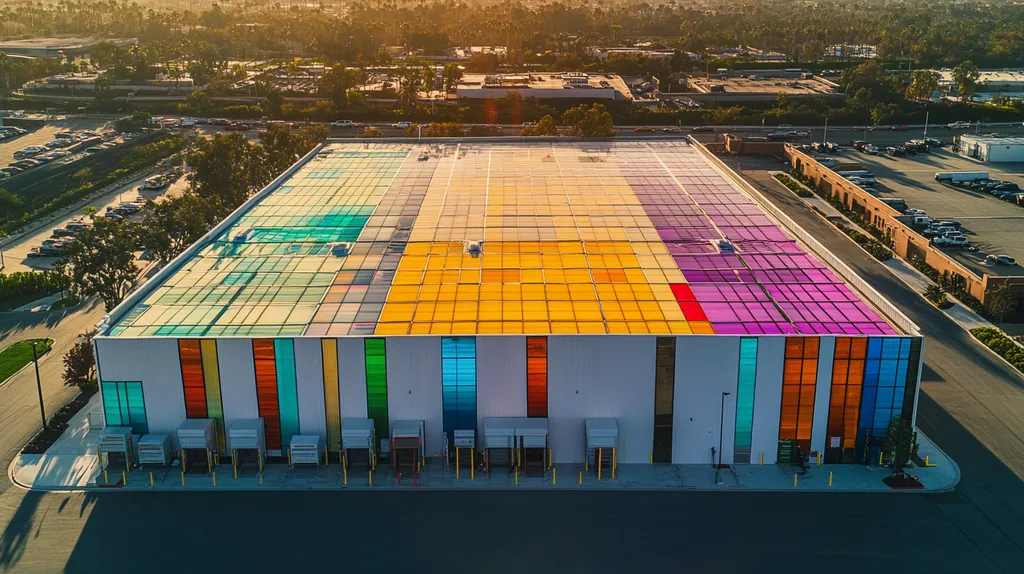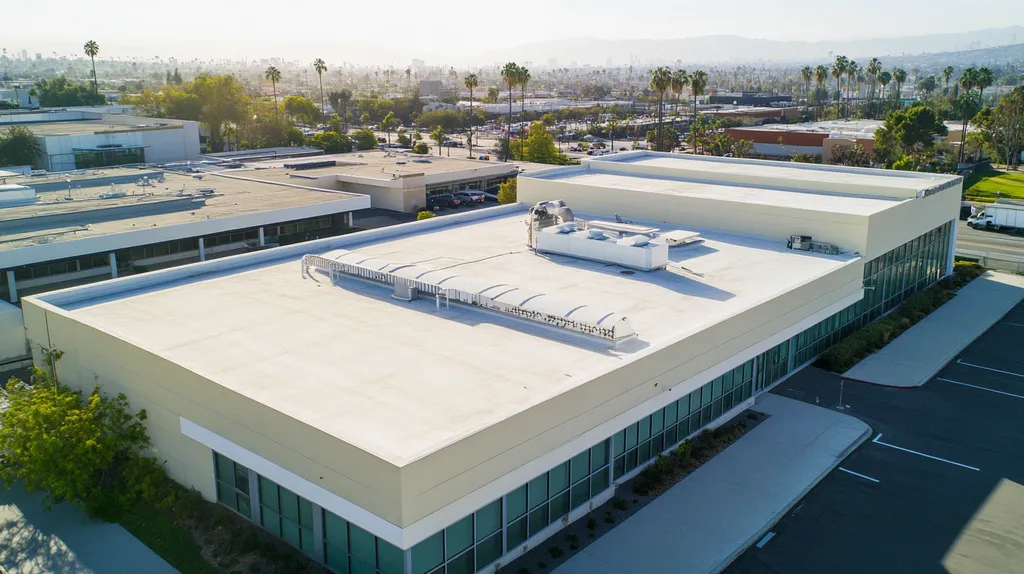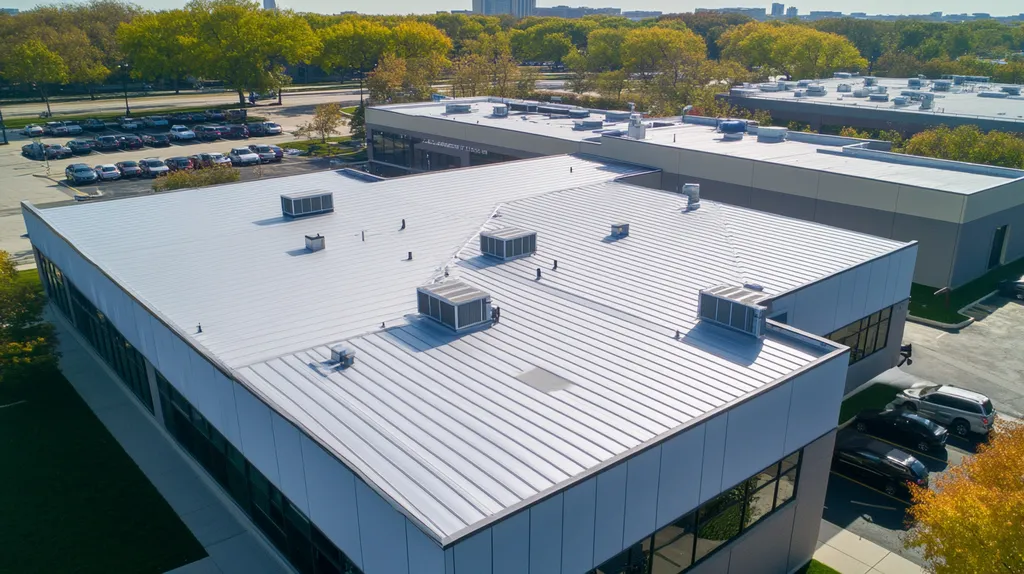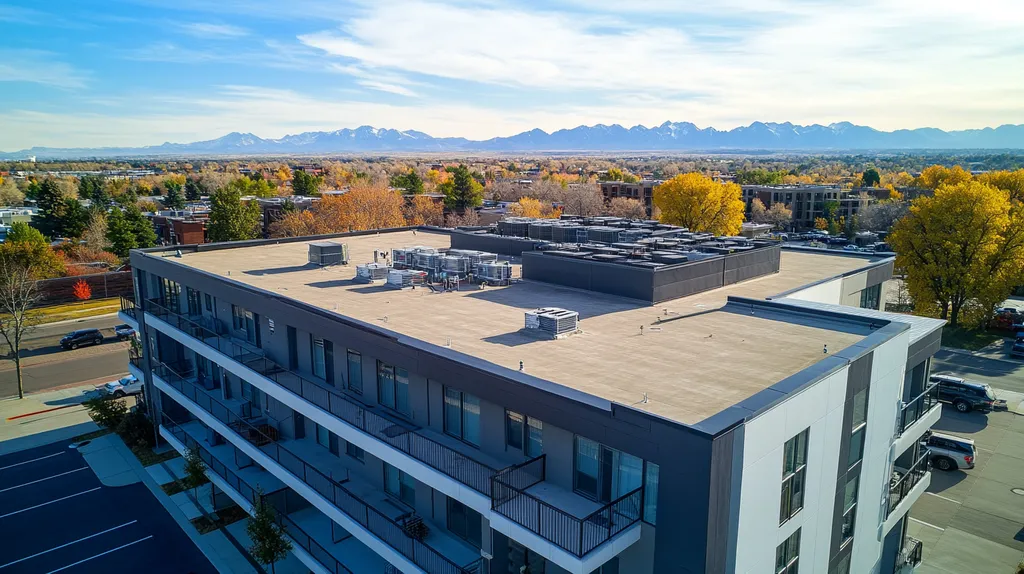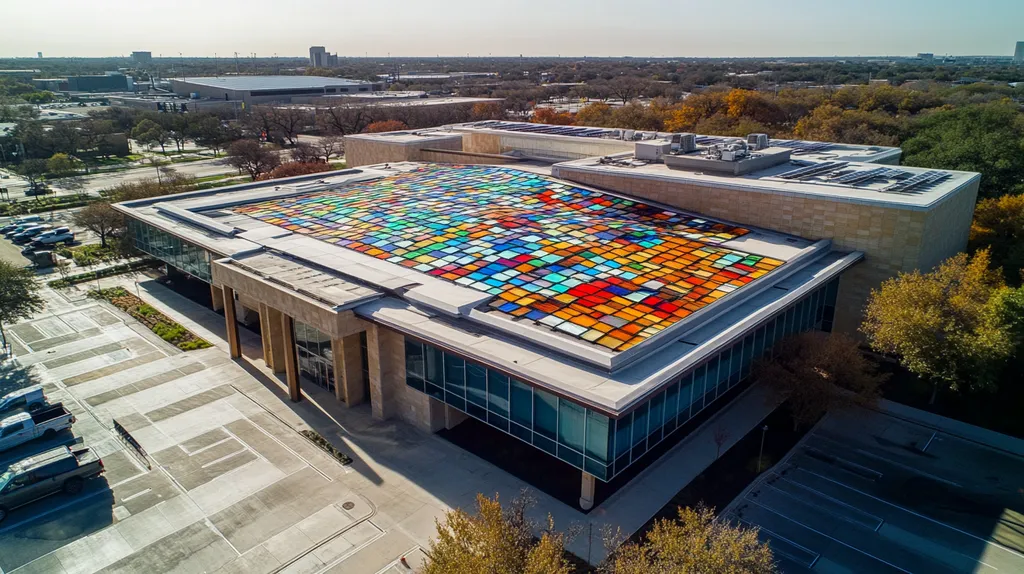In today’s industrial landscape, a staggering 40% of roofing projects exceed their planned timeline, resulting in millions of dollars in operational disruptions and unexpected costs.
While conventional wisdom points to weather delays and material availability as primary culprits, emerging data reveals a more complex reality: systemic issues in quality control, climate-specific material selection, and maintenance protocols are the true drivers of extended project durations.
This analysis examines how these overlooked factors impact industrial roofing timelines and presents evidence-based solutions for optimizing project efficiency.
SECTION 1: CURRENT PRACTICES
In the world of industrial roofing, understanding the factors that impact project duration is not just important—it’s essential. A staggering 40% of roofing projects face delays, largely due to practices that could be optimized. The key elements to focus on are material selection standards, installation procedures, and maintenance schedules. These components not only dictate timelines but also significantly influence the longevity and efficiency of roofing systems.
Material Selection Standards
The importance of careful material selection cannot be overstated. Choosing the wrong or substandard materials can create unexpected challenges during installation. For instance, opting for a cheaper roofing membrane might seem cost-effective initially, but it often leads to rapid deterioration and frequent repairs down the line.
Moreover, sourcing materials can introduce delays. If the required products aren’t readily available or have extended lead times, the entire installation can stall. Familiarizing oneself with the characteristics of various roofing materials—like their lifespan and warranty options—empowers property owners to make smarter choices that enhance project timelines.
Contractors must communicate effectively about the implications of material choices. Selecting the appropriate materials will minimize future complications, preserving the roof’s integrity and ultimately saving time and money.
In essence, making prudent material selections can not only speed up the roofing process but also improve performance, illustrating why this factor is so crucial.
Installation Procedures and Protocols
Efficient installation procedures are another key factor influencing the duration of an industrial roofing project. Clear, systematic protocols can streamline execution, while disarray often breeds delays. For example, modern installation techniques can make a significant difference in how quickly a project is completed.
Proper training for workers on the specific roofing system being installed is also vital. An installation crew unfamiliar with a roofing technology may make errors, leading to costly rework and an extended timeline.
Additionally, maintaining an organized job site is essential. Clutter can hinder progress and elevate the risk of accidents. A clean and efficient work environment not only enhances safety but also contributes to a smoother workflow, which positively impacts the project duration.
Prioritizing effective installation methods fosters not only a timely roofing job but also results in a safer environment and a more dependable final product.
Routine Maintenance Schedules
Routine maintenance schedules have a profound impact on the lifecycle and performance of an industrial roof, ultimately influencing subsequent job timelines. Regular inspections catch minor issues before they escalate into major repairs, which can be time-consuming and disruptive.
Property owners often overlook the long-term benefits of proactive maintenance. A well-structured maintenance plan can prolong the lifespan of roofing materials and enable timely repairs, which helps avoid interruptions to business operations.
Establishing clear maintenance protocols also aids in addressing issues promptly as they arise. This readiness can lead to shorter, more manageable repair timelines, sparing the organization from prolonged disruptions.
In conclusion, a comprehensive maintenance schedule is not merely about preserving a roof; it is essential for effective management of future roofing projects.
SECTION 2: SYSTEMIC ISSUES
The intricate nature of industrial roofing projects often leads to severe miscalculations, resulting in costly and time-consuming delays. Inadequate quality control during installation, neglecting to choose climate-specific materials, and failing to consider the roof’s intended usage can stretch project timelines. Alarmingly, nearly 30% of roofing jobs are postponed due to these systemic problems. Addressing these issues is not just advisable—it is crucial for maintaining efficiency and ensuring successful project completion.
Inadequate Quality Control in Installation
Quality control is vital for any industrial roofing installation, yet many contractors overlook essential standards. This neglect can result in significant mistakes, such as incorrect sealing and misaligned seams, leading to water leaks that necessitate extensive repairs.
For example, a small installation error can escalate into large structural concerns, demanding extensive rework and additional time. Without strict adherence to quality control measures, unexpected re-inspections and necessary revisions can multiply, transforming a project timeline from weeks into months.
Moreover, failing to maintain quality can cause delays in subsequent construction tasks. A subpar roof can prevent other contractors from proceeding with their work, creating a ripple effect of holdups throughout the entire project.
By prioritizing rigorous quality checks, property owners can help ensure compliance with best practices. Investing time and resources into quality control safeguards timelines and mitigates risks of future complications.
Neglect of Climate-Specific Materials
Selecting materials that correspond with local climate conditions is essential for the durability and efficacy of an industrial roof. Unfortunately, many roofing projects ignore this critical aspect, leading to rapid deterioration and ineffective performance. For instance, a roofing system designed for mild weather may struggle under heavy rains or snow, resulting in prolonged repair timelines.
Utilizing inappropriate materials not only creates functional problems but can also spark warranty disputes. When roofs fail under adverse weather, costly repairs become unavoidable, which in turn stirs budget concerns and delays project schedules.
Additionally, material lead times can be affected by seasonal demands in different climates. Choosing the right materials, which might require more time to source, must be planned to avoid interruptions in the overall project timeline.
Engaging with roofing specialists who understand local conditions can dramatically enhance material selection. With appropriate materials in place, projects are more likely to proceed smoothly and stick to planned schedules.
Overlooking Roof Usage and Load
A frequent oversight in roofing projects is neglecting to account for the specific loads and uses the roof will encounter. Industrial roofs are often subjected to additional stress from equipment, storage, or heavy foot traffic. Leaving these factors unconsidered during planning can lead to significant design flaws that necessitate expensive rework.
For instance, a roof originally designed for light loads may not accommodate heavy mechanical units, risking structural integrity and causing delays due to necessary adjustments and reinforcements.
Moreover, a lack of planning regarding roof usage can complicate maintenance access, further disrupting future repairs and extending downtime. Facilities managers must take future usage patterns into account when overseeing roof installations.
By collaborating with structural engineers during the design phase, property owners can ensure load requirements are precisely assessed. Such foresight enables efficient and reliable completion of industrial roofing projects, ultimately benefiting operational continuity.
SECTION 3: MISSED OPPORTUNITIES
In the fast-paced world of industrial roofing, missing critical strategies can create significant delays. Property owners are often unaware that simple actions can drastically shorten project duration. For example, the National Roofing Contractors Association states that effective maintenance can extend a roof’s lifespan by up to 50%. By underutilizing roof coatings, neglecting regular inspections, and disregarding environmental considerations, property managers risk escalating costs and prolonging job timelines. These oversights can severely hinder overall operational efficiency.
Underutilization of Roof Coatings
Roof coatings are a game changer in industrial roofing projects, yet their full potential often goes unrecognized. These coatings provide a vital layer of protection that helps reduce damage and prolong the roof’s lifespan. When property owners choose not to apply these coatings, they invite premature deterioration, leading to larger repair jobs that consume valuable time and resources.
Additionally, coatings can enhance energy efficiency by reflecting sunlight, which lowers cooling costs and contributes to long-term savings. Skipping this crucial step may lead to weather-related damage and longer project timelines due to frequent repairs.
Moreover, roof coatings form a seamless barrier that prevents leaks and moisture buildup. Without this protective shield, minor issues can escalate over time, necessitating extensive repairs that require more labor and materials. Recognizing the importance of coatings can accelerate roofing projects while increasing building durability.
In short, embracing roof coatings can streamline roofing jobs and bolster building longevity. Education on their benefits is essential for reducing future downtime and minimizing costs associated with industrial roofing projects.
Lack of Regular Inspections and Record Keeping
Neglecting regular inspections can lead to more complicated and drawn-out repairs for industrial roofs. Without routine check-ups, small issues can snowball into major problems, demanding significant time and resources to address. These systematic inspections are foundational for ensuring the roof’s integrity.
Regular inspections reveal early signs of trouble, such as leaks, punctures, or membrane deterioration. Keeping thorough records of these inspections allows property managers to track the roof’s history and make informed decisions, thus expediting repairs and reducing downtime.
Additionally, regular inspections are crucial for maintaining compliance with warranty requirements set by manufacturers. Falling short in this area could void warranties, resulting in higher costs should a roof failure occur. A proactive inspection schedule helps mitigate risks while contributing to a smooth project timeline.
To summarize, investing in regular inspections and maintaining diligent records can significantly minimize delays. This proactive strategy not only sustains roof performance but also facilitates timely repairs, ultimately enhancing overall operational efficiency.
Ignoring Solar Exposure and Ventilation
Many property owners underestimate how solar exposure and ventilation impact roof durability and lifespan. Ignoring these factors can lead to accelerated deterioration and necessitate frequent, time-consuming repairs. Solar exposure subjects roofing materials to temperature-induced stress, leading to issues such as blistering or cracking.
To combat these challenges, property owners should select materials designed to reflect sunlight and enhance thermal performance. This foresight can help evade premature roof failure, saving time and resources in the long run.
Likewise, proper ventilation is essential for prolonging a roof’s life. Inadequate ventilation can trap heat and moisture, encouraging mold growth and degrading materials. Ensuring sufficient airflow supports temperature regulation and improves roofing system longevity.
By addressing solar exposure and ventilation during the design and maintenance phases, property owners can significantly reduce potential project delays. Recognizing these environmental factors not only leads to a more durable roof but also ultimately saves time and costs in the future.
SECTION 4: ROOT CAUSES
When it comes to industrial roofing projects, the stakes are high. Issues like poor material quality and inexperienced contractors can have a profound impact on project timelines and costs. Shockingly, studies have shown that using inferior materials can increase a roof’s failure rate by up to 30%. Each instance of negligence—from contractor expertise to budget restrictions—serves to amplify the risk of extended job durations. For property owners and facility managers, recognizing these root causes is essential for protecting their investments and ensuring successful project outcomes.
Poor Material Quality and Durability
Utilizing low-quality materials is a critical misstep in industrial roofing projects. Such materials can pave the way for leaks, structural problems, and potential safety hazards. For example, a subpar roofing membrane may tear or degrade much quicker than high-quality alternatives, forcing premature replacements.
The ramifications don’t stop at the initial project timelines; repeated failures can create a ripple effect, leading to prolonged repair schedules and escalating costs. Every delay impacts both the budget and the continuity of operations.
Choosing high-quality materials from reputable manufacturers is paramount. Such investments not only reduce risks but also ensure that a roof can withstand challenging environmental conditions. Ultimately, the right material choices facilitate efficiency and minimize project duration.
Property owners should pay close attention to material certifications and performance ratings. This understanding empowers them to make informed decisions, steering clear of the pitfalls that come with inferior products.
Inexperienced Roofing Contractors
The experience level of roofing contractors significantly influences the efficiency of industrial roofing jobs. A team that lacks training or specialized knowledge can lead to costly delays and errors. For instance, improper installation techniques might cause water pooling, leading to extensive damage and significant repair costs.
In addition to initial installation mishaps, inexperienced crews often struggle with ongoing maintenance, further complicating budget forecasts and impacting the roof’s lifespan. Miscommunications, misunderstandings of project requirements, and inefficient processes can all contribute to slower timelines.
Selecting contractors with extensive experience and a solid reputation is crucial. This decision can dramatically enhance project duration and overall performance. Property owners should verify a contractor’s track record and references to gain insights into their expertise and reliability.
Furthermore, investing in ongoing training for roofing crews can yield substantial benefits. Keeping the team updated on industry best practices enables them to work more efficiently and effectively on each project.
Inadequate Budgeting for Maintenance
Another significant root cause of prolonged roofing projects stems from inadequate budgeting for maintenance and repairs. Many property owners underestimate the crucial nature of a proactive maintenance plan, adopting a neglectful approach that leads to escalating issues over time.
Without financial allocations for regular inspections and necessary repairs, minor problems can evolve into major projects that consume valuable time and resources. For example, neglecting to replace worn-out sealants can lead to severe water damage, ultimately necessitating full roof replacements.
Establishing a realistic budget that accounts for regular upkeep is essential for avoiding unplanned expenses and protracted disruptions. By investing in a preventive maintenance program, property owners can save both time and money down the line.
In summary, having a well-informed perspective on budgeting for maintenance is crucial. Such diligence not only protects the roof but also ensures smoother roofing timelines and healthier overall project outcomes.
DATA DRIVEN EVIDENCE
The stakes in industrial roofing are high, and understanding the factors that influence roofing job duration is vital for property owners and facility managers. A well-maintained roof can last up to 50% longer than a neglected one, saving significant costs on premature replacements. As the decision-making process unfolds, it’s crucial to examine how various components impact project timelines to make informed choices that safeguard investments and enhance operational efficiency.
Lifespan Variations by Material Type
The roofing material selected is a decisive factor in determining the lifespan of an industrial roof. For example, while single-ply membranes generally last between 20 and 30 years, metal roofs can exceed an impressive 50 years under optimal conditions. Each material presents unique durability traits that influence performance and longevity.
Moreover, it’s important to recognize that the initial investment in roofing materials often reflects their durability. Higher-quality materials may demand a larger upfront expense but can significantly reduce long-term costs through fewer repairs and replacements. This consideration is essential for property owners aiming to maximize their budgets.
Local climate is also critical in this discussion. In regions with extreme weather, certain materials—like modified bitumen—may not perform as well as thermoplastic polyolefin (TPO). Knowledge of local environmental conditions is vital for making the right material selection.
In summary, the choice of roofing material impacts not only installation timelines but also long-term performance and maintenance requirements, highlighting its critical role in effective roofing project management.
Impact of Weather Conditions on Roofing
Weather can dramatically affect how long an industrial roofing job takes. Adverse conditions such as rain, snow, and extreme temperatures can cause delays in installation and compromise the quality of the work completed. For example, roofing installations are ideally avoided during periods of heavy rain, which can lead to water damage during the process.
Startling data shows that up to 25% of roofing projects may face delays due to severe weather. These interruptions extend the overall job duration and can compromise the integrity of the roof if not properly managed.
Additionally, weather conditions during the lifespan of the roof can influence its longevity if properly accounted for in maintenance planning. Regular assessments should be scheduled, keeping in mind the specific vulnerabilities created by the local climate.
Overall, recognizing how weather impacts both installation and long-term durability helps property owners better prepare and protect their roofing investments from unforeseen complications.
Cost-Benefit Analysis of Maintenance vs. Replacement
Making the choice between maintenance and replacement is a crucial financial decision for property owners. Implementing a robust maintenance plan can significantly prolong a roof’s lifespan, often costing merely 10-20% of the price of a complete replacement over time. Property managers should closely analyze this cost-benefit ratio.
Research indicates that routine maintenance can deliver a return on investment of up to 300% compared to the costs incurred from neglect, leading to premature replacements. This underscores the vital importance of regular inspections and repairs, especially for aging roofs.
Furthermore, neglecting maintenance often invites unexpected emergencies, escalating costs, and leading to longer project delays. For example, a minor leak left unaddressed can develop into significant structural damage, requiring an urgent and costly replacement.
In essence, engaging in regular maintenance not only ensures the roof’s integrity but also mitigates potential costs in the long term. For property owners, the message is clear: investing in preventative measures is imperative for achieving a roof’s full lifespan effectively.
SECTION 6: ALTERNATIVE SOLUTIONS
In the high-stakes world of industrial roofing, delays can be not just frustrating but financially crippling. To combat the costly downtime that can arise from traditional materials and methods, property owners should explore innovative roofing solutions. Leveraging advanced materials, proactive maintenance strategies, and climate-appropriate designs can drive efficiency in both installation and long-term performance. By addressing these elements comprehensively, property owners can minimize project duration and maximize operational efficiency.
Advanced Roofing Materials and Technologies
Embracing cutting-edge roofing materials is a powerful way to accelerate installation while boosting durability. For instance, adopting pre-fabricated roofing systems allows for quick assembly, reducing on-site labor significantly. Innovations like thermoplastic polyolefin (TPO) membranes not only enhance energy efficiency but also lower the need for adjustments after installation.
Moreover, modern adhesives and sealants drastically improve bond times, translating to more efficient workflows. Energy-efficient materials decrease heating and cooling demands, promoting longevity and sparing property owners from frequent repairs that extend project timelines.
By investing in these state-of-the-art materials, property owners foster smooth execution of current projects and lay down a solid foundation for durability and aesthetics. The industry’s shift toward innovative solutions highlights its commitment to responding to the ever-evolving needs of property management.
Ultimately, the effective use of advanced materials sets the stage for organized and expedient roofing projects, ushering in an era of efficiency.
Proactive Maintenance and Inspection Strategies
Adopting proactive maintenance and inspection practices can significantly reduce unexpected project delays. Regular inspections help identify potential issues early, allowing for timely repairs that prevent lengthy disruptions. For example, a robust maintenance schedule can reveal minor leaks or membrane deterioration before they escalate into major problems.
Utilizing technology, such as drones for roof inspections, enables quick assessments and mitigates safety concerns traditionally linked with manual inspections. This digital edge empowers property owners to make informed decisions promptly, minimizing risks of project delays.
Additionally, maintaining thorough records of inspections enhances communication with contractors, facilitating faster repairs and reducing potential misunderstandings. Establishing consistent maintenance routines eases transitions into larger roofing projects, considerably shortening unexpected job durations.
Investing in these proactive approaches not only ensures safety but also leads to greater efficiency in roofing projects.
Customized Roofing Solutions for Specific Climates
Each geographical region presents unique climate challenges that can impact roofing project timelines. By tailoring roofing solutions to fit the specific demands of local environments, property owners can enhance both performance and installation speed. For instance, reflective materials in hot climates can lower energy consumption while also speeding up installation thanks to their lightweight properties.
In colder areas, modified bitumen roofing provides additional flexibility and resilience against cracking, facilitating quicker applications. Selecting materials that align with local weather conditions minimizes the potential for costly adjustments post-installation, thereby expediting the overall project timeline.
Furthermore, design strategies such as incorporating sloped roofs in snowy regions can effectively manage local concerns and lessen the need for extensive repairs later. Aligning roofing design with environmental factors ensures that roofs not only endure but thrive in their surroundings.
By implementing climate-focused roofing solutions, property owners can significantly lessen the risk of delays, accelerating project completions and optimizing overall system performance.
Moving Forward
With industrial roofing projects now averaging $2.5 million and impacting operations for weeks or months, the stakes have never been higher for getting duration right.
The evidence clearly shows that traditional factors like weather and material availability are no longer the primary drivers of extended timelines.
Instead, systemic issues including poor quality control, climate-inappropriate materials, and inadequate maintenance protocols are causing 40% of projects to exceed planned durations.
By embracing advanced materials, implementing rigorous inspection schedules, and developing climate-specific solutions, property owners can dramatically reduce project timelines while enhancing roof performance.
The future of industrial roofing depends on addressing these core challenges through data-driven decision making and proactive management strategies.
FREQUENTLY ASKED QUESTIONS
Q. What current practices affect the duration of a commercial roof project?
A. Key practices like material selection, installation procedures, and maintenance schedules can greatly influence timelines. Poor material choices lead to unexpected issues during installation, while proper protocols can streamline progress. Staying organized and informed about materials enhances efficiency and ultimately speeds up roofing projects.
Q. How do systemic issues complicate industrial roof projects?
A. Systemic problems like inadequate quality control and neglecting climate-specific materials can bog down progress. These issues often lead to mistakes that require rework, extending timelines. Addressing these factors early can prevent delay and ensure a smoother installation experience, protecting your investment.
Q. What missed opportunities can prolong an industrial roof job?
A. Not utilizing roof coatings or neglecting routine inspections can lead to major delays. Effective maintenance, such as regular check-ups, can significantly extend roof lifespan and prevent disruptive repairs. Recognizing these actions as essential can greatly enhance project timeliness and efficiency.
Q. What root causes often delay industrial roof installations?
A. Issues like poor material quality and inexperienced roofing contractors can create lasting setbacks. Using inferior materials results in higher failure rates, while inadequate contractor knowledge can lead to costly errors. Identifying and addressing these root causes can streamline project completion and preserve your budget.
Q. How do weather conditions affect the duration of a commercial roof project?
A. Adverse weather like rain or snow can halt installation and extend project durations. Studies reveal that severe conditions lead to delays in up to 25% of roofing projects. Proper planning for weather impacts can enhance timelines and safeguard the integrity of the installation process.
Q. What alternative solutions can expedite the duration of industrial roofing jobs?
A. Exploring advanced roofing materials and proactive maintenance strategies can significantly accelerate timelines. Innovations like prefabricated systems streamline labor, while regular inspections catch issues early. Tailoring solutions to your local climate also ensures efficiency and longevity, enhancing overall project performance.
Q. What inspections should I schedule for my industrial roof?
A. Regular inspections for leaks, membrane deterioration, and structural integrity are essential. Scheduling seasonal check-ups can prevent small issues from becoming major repairs, ensuring efficient operation. Keeping thorough records of these inspections aids informed decision-making, maintaining the longevity of your roof.

